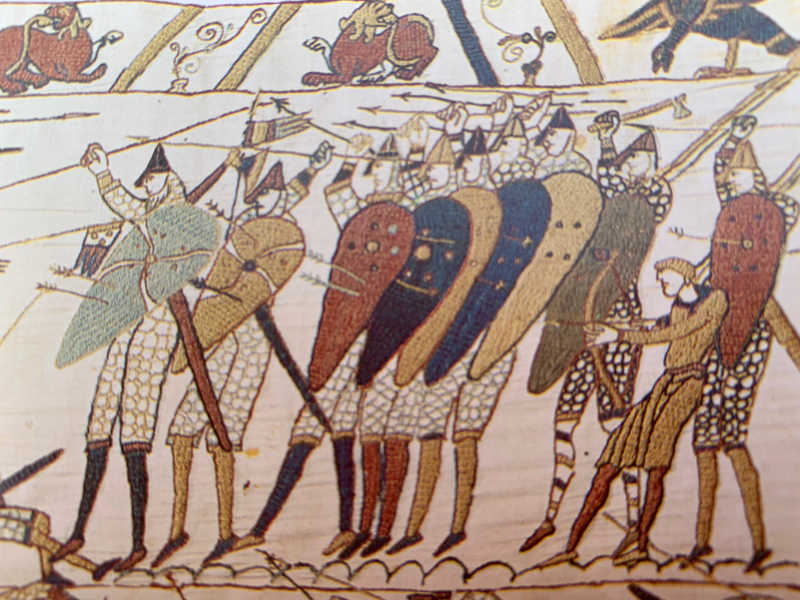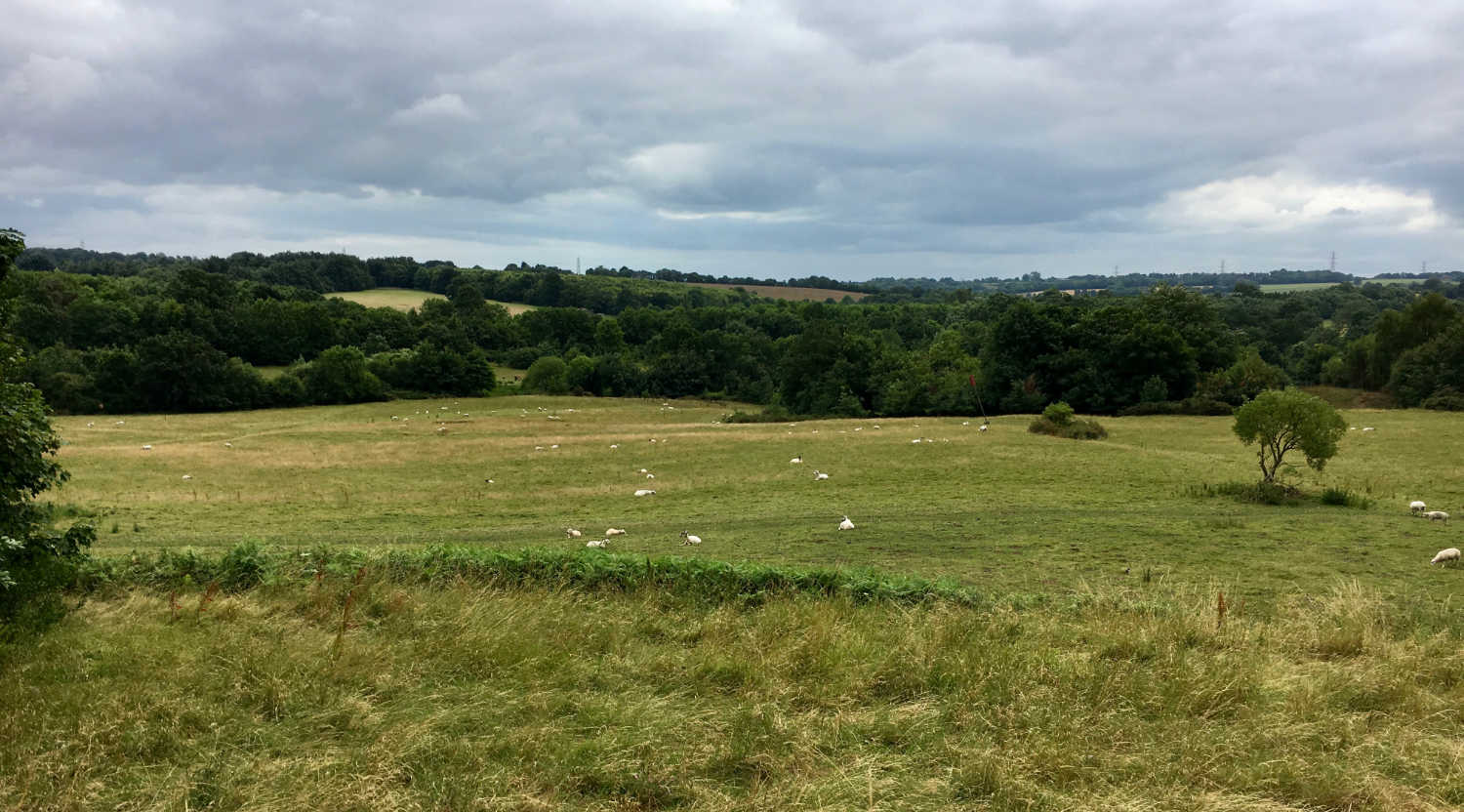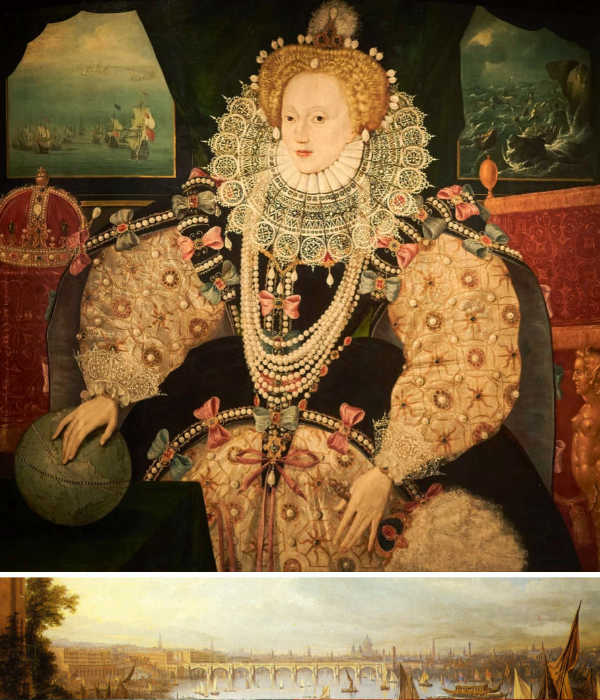Hastings
The difference a day makes

William would have known battle was coming once he set foot in England, the question was when? In the words of William of Poitiers:
Harold on his part [was] eager for battle by sea and land…
William of Poitiers
The English king was clearly happy to make sure it was sooner rather than later.
Why? Battles - proper full-on pitched battles - are rare and with good reason. The saying that plans rarely survive contact with the enemy has plenty of evidence to make it stick. Months or even years of raising money, diplomacy, training and logistics, not to mention huge numbers of men and horses could be wiped out in a day. A disaster on the field could lead to death or imprisonment and ransom for kings and dukes too. At some point self preservation strikes one side who find more advantage in delaying, ravaging and besieging - gaining ground the slow way.
William had much, perhaps everything to lose. Trying to hold to a positive narrative, the Norman partisan William of Poitiers portrayed William
…daunted neither by the delay, not by the contrary wind, nor by the loss of ships, nor even by the craven flight of many who broke faith with him. “You fight”, [he has William tell his men,] “not merely for victory but also for survival.
William of Poitiers
This was not just dramatic tension to make a better story. William had been advised against the whole exercise by many of his leading barons. Extensive diplomacy had helped to secure both recognition of his claim to the English throne and a measure of security for Normandy in the meantime, helped by weakness of his immediate rivals and neighbours the king of France and duke of Brittany. But William still felt it necessary to have his barons pay homage to his son, Robert, as duke before departure. Just in case of the worst.
Even that departure nearly did not happen. William and his army were holed up in Dives, the forest of their masts shown on the Bayeux Tapestry, but a persistent wind blowing from the north kept them clustered together in the harbour. As food ran low William hid this from his men by increasing their rations. Doubling down, you suspect that many felt the whole thing had gone on long enough, and the longer it dragged on in England the weaker William’s position was going to get.
Surely, then, all Harold had to do was to wait him out. For the English king, though, it may not have been that simple. Harold may have felt that this was as good as it was going to get. He had established himself as king in England and seen off the challenge of Europe’s most renowned warrior in Harald Hardrada. While this had worn his forces down, reinforcements were arriving and there was an opportunity to roll one victory into another, settling things once and for all.
Recent English history would also have had its lessons. The Danish invasions at the turn of the century moved faster than royal armies could engage them, sowing dissent and division and further weakening the king’s ability to solve the problem by force. When the Godwin family rebelled against Edward the Confessor in 1051-2 the armies confronted each other but thegns on both sides - the English equivalent of knights - refused to fight because they knew of the risk to the kingdom from these kind of divisions that had led the Danes and Cnut to the crown a generation before. A rival would-be royal army in England for any length of time did not bode well.
Harold had also seen William up close during his ill-fated sojourn in Normandy of 1064. They campaigned together and seem to have developed an appreciation of the other’s abilities. Harold may have observed that giving William time and space would be a greater risk than battle now. Castles were almost unseen in England before 1066 and William clearly intended to rely on them, bringing ready-made castle sections on his fleet and fortifying the old Roman fort at Pevensey on his landing. The English, unpracticed at siege warfare, may not have had an answer. So
Harold’s plan was to catch the Normans unawares and overwhelm them by an unexpected or night attack.
Orderic Vitalis
The same idea as Harold had used to defeat Harald Hardrada at Stamford Bridge days earlier. No plan, as they say, survives contact with the enemy.

King Harold Godwineson had seen off his first big challenge of 1066. The army of Christendom’s most famous warrior, Harald Hardrada, had been surprised and destroyed in the north at Stamford Bridge. At that moment, the winds changed in the south and Duke William of Normandy finally crossed the Channel. Harold’s army made it to the south coast in heroic time, and the king stuck with a winning strategy.
But while Hardrada’s men were caught unprepared without their armour, William’s scouts had done their job. The Normans were able to charge the English before Harold had fully drawn up his line across the top of the hill above Senlac now, predictably, named Battle.
This was a crucial success for William, as the early charge appears to have killed Harold’s brothers, Gyrth and Leofwine, leaving Harold as the only English leader of any note. The chronicler Florence of Worcester, writing around fifty years later, also has Harold himself falling in the early stages of the battle not long after dawn.
Yet the English survived, and Harold’s strategy came to the fore. He had packed the narrow crest of the hill with a wall of infantry. The Normans had to rely on archers or have their knights charge up a steep and no doubt muddy hill. Armies typically charged into each other. Again, Harold had fought with Norman knights in 1064 and now he had a plan.
After its early wobble, the plan worked. The English line held and and many of William’s knights fled - William of Poitiers points the finger at the Breton contingent who were most likely mercenaries. A rumour had swept through the army that William was dead. Without him, there was no point in fighting on. To stop the rout, William tore off his helmet and rode into the retreating troops. This was the risk of battle - of immediate personal injury or the consequences of defeat. William faced it, and it paid off.
The duke was able to rally his troops just as Harold lost control of his own line. Some of the English, possibly the less trained levies gathered hastily as Harold had marched south, pursued their fleeing attackers. William brought his men around to cut them down, and then used more of these feigned retreats to steadily lure more of the English infantry off the hill throughout the day. The English, it seems, were paying the price for the loss of experienced troops at Fulford and Stamford Bridge immediately before, and their leadership casualties at the start of the day.
William was also able to combine his archers and knights as they attached together. It may have been then, late in the day, when Harold was struck by an arrow and cut down by knights next to his standard near the spot where the high altar of Battle Abbey now stands.
Even then, Harold’s trained household troops were able to rally for a short while on a nearby hill even less helpful to mounted Norman knights. The English had held out from dawn to dusk, but did not make it through the day.
Both sides had wanted battle and it went the distance like few others. Why William succeeded has occupied armchair generals ever since. Harold’s strategy - to block the road to London and hold a high point with infantry which would wear the Norman knights down into submission - has a lot to recommend it. William’s tactics - his quick response to the dawn attack, his personal bravery and ability to manage his army through the feigned retreats - were hugely effective and almost certainly saved the day from disaster. William’s control of his army on the day may well have been the difference, with Harold paying a high price for choosing to deal with William straight away and his losses in that first attack of the day. But it was, to borrow from another battle, a close run thing.
The judgement of God? Many may have thought so. That was not enough for William to rely on, though. For the new king the work was just beginning.
Bibliography
- Bayeux Tapestry (late C11th)
- William of Poitiers (late C11th; 1998 edition) Gesta Guillelmi of William of Poitiers. Oxford, Oxford University Press
- ed. Swanton, Michael (2000) The Anglo-Saxon Chronicles. London, Phoenix Press

